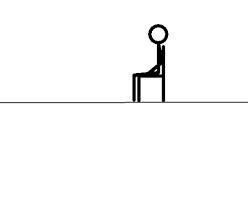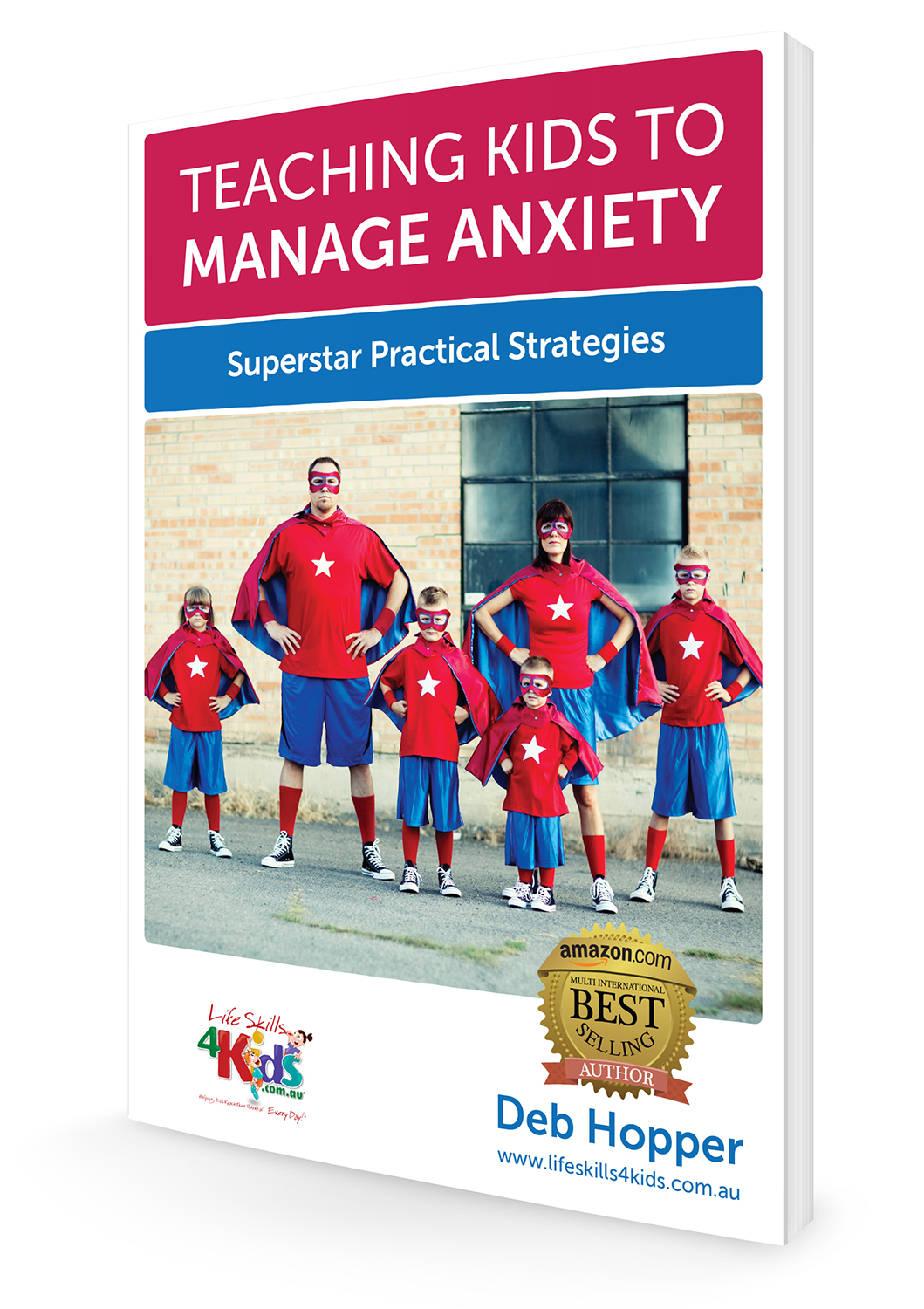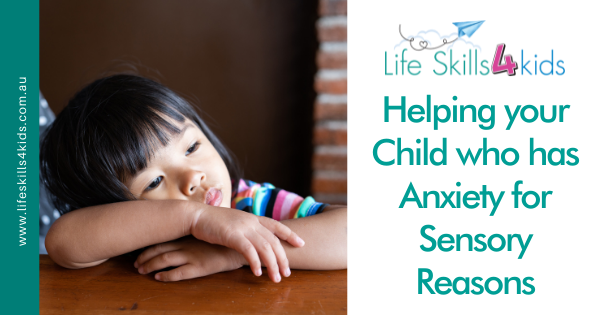As a parent, it can be really hard to cope with watching your young person struggle with sensory challenges when you don’t really know how to help them.
We all want our kids to be happy, relaxed and able to enjoy life. Let’s look at some strategies that you can use at home to help your child who has anxiety due to sensory problems.
Helping your child who has anxiety for sensory reasons
Strategies for Physical Comfort & Focus
- For kids to feel safe and comfortable, the seating that you provide can be key.
- If you think about yourself, when you are eating, working or even going to the loo – you will sit with your feet flat on the floor and more or less in a ninety degree angle position

- Remember this picture when your child is sitting – to help reduce anxiety, enable them to feel safe and grounded by ensuring that the seat they sit on allows them to have their feet flat on the floor
- You will often see kids with their feet dangling on seats that are too tall for them. If you can’t find a seat that allows the child to put their feet on the ground, then it’s important to add a footstool, to enable them to ‘plant’ their feet.
- If you have space at home, you can find some great alternative seating which could help your child. It is worth liaising with school to see what sort of seating they have and then modify this for home use.
- Your kids will love it if they can have an exercise ball or a wiggle chair to sit on at home. It’s also possible to get hold of a squishy cushion to take out with you – these can be used wherever you go, to help your child stay calm,
- Remember to talk to the school and occupational therapist about tools you can use to help keep anxiety to a minimum,
- Some kids need a stretchy exercise band on their chair, so that they can bounce their feet
- Other kids feel safe and secure if they wear a weighted vest or have a weighted blanket on their lap.
- Allow your child to have a handheld fidget toy, this will also have the effect of reducing their anxiety.
- Think about whether your child is noise-sensitive, if they are allow them to wear noise-muffling headphones – you can get some really cool ones which they will be more than happy to wear!
- Be flexible and let your young person find their own position for playing/doing homework – kids don’t have to learn just sitting at a table, we are all unique and all relax in different positions.
- If your child needs to move about to feel calm, let them sit on a seat to the side or tape off a floor area which they are allowed to move around in.
Strategies for Self-Awareness & Self-Regulation
- All kids need clear boundaries to help them feel safe, secure and confident. Whenever you can, create a daily routine together with your child AND stick to it.
- If there will be changes in that routine, your young person needs pre-warning and preparing for this change.
- You can use egg timers, iPads, iPhones to set a timer for a certain activity. This can be really helpful for staying at the table during dinner, computer time if your child easily becomes obsessed and TV time too.
- Choose a signal together, so that when your child needs a break or is getting overwhelmed, they can let you know.
- Think about building a safe space that your young person can take themselves to when they need quiet time and personal space. Check out our article on safe spaces to help do this.
For Homework & Accessing Hobbies
- Many of our kids want to do their homework or spend time on a hobby, but struggle to focus and feel anxious about these activities.
- It is up to us, as parents. to provide the tools for them to be able to accomplish these things.
- It is always worth liaising with the child’s class teacher, so that the strategies you put in place are similar to those at school – continuity is a vital factor in reducing anxiety.
- In a similar way to creating a safe space for your young person, also look at finding a quiet, distraction-free space where your child can become engrossed in learning activities.
- As adults, we will often make ourselves a study/office in our homes for times when we need to work and it is easy to forget to do this for our young people.
- If you have a study/office could you share it with your child, so that they had the benefits of a quiet, calm space too?
- Do not be afraid to take advantage of technology – this can provide you with easy-to-use programs for speech-text software; clear, simple images and captioned videos.
- Experiment with your child as to whether they learn better if they have noise-cancelling headphones on or headphones with music to keep them focussed and regulated.
Other Articles for Helping your child who has anxiety for sensory reasons
At Life Skills 4 Kids we are passionate about working with parents to enable them to provide strategies and tools for their young people. We all know that feeling anxious can be scary and upsetting and finding ways to help our kids thrive and be calm is very important.
Here are some of our articles to help you:
- Understanding anxiety and the impact on your child’s happiness
- 10 indicators that your child is anxious
- Helping kids with anxiety at home
- Supporting your child to communicate when they are anxious
- Helping your child with learning difficulties deal with anxiety
Teaching Kids to Manage Anxiety: Superstar Practical Strategies (eBook)
Kids today are growing up in a fast-paced world where information and opportunity overload can be overwhelming.
Based on many years of clinical experience as an Occupational Therapist, Deb Hopper has been using her Just Right Kids® Model to teach children to communicate and manage their stress and anxiety by:
– Identifying their “body speed”,
– Understanding their stress triggers, and
– Implementing simple strategies to reduce anxiety and stress.


